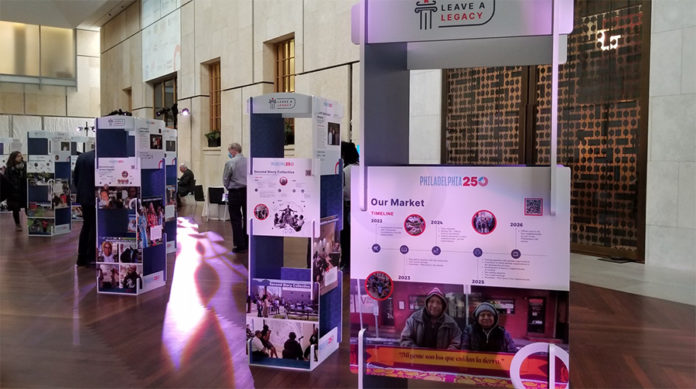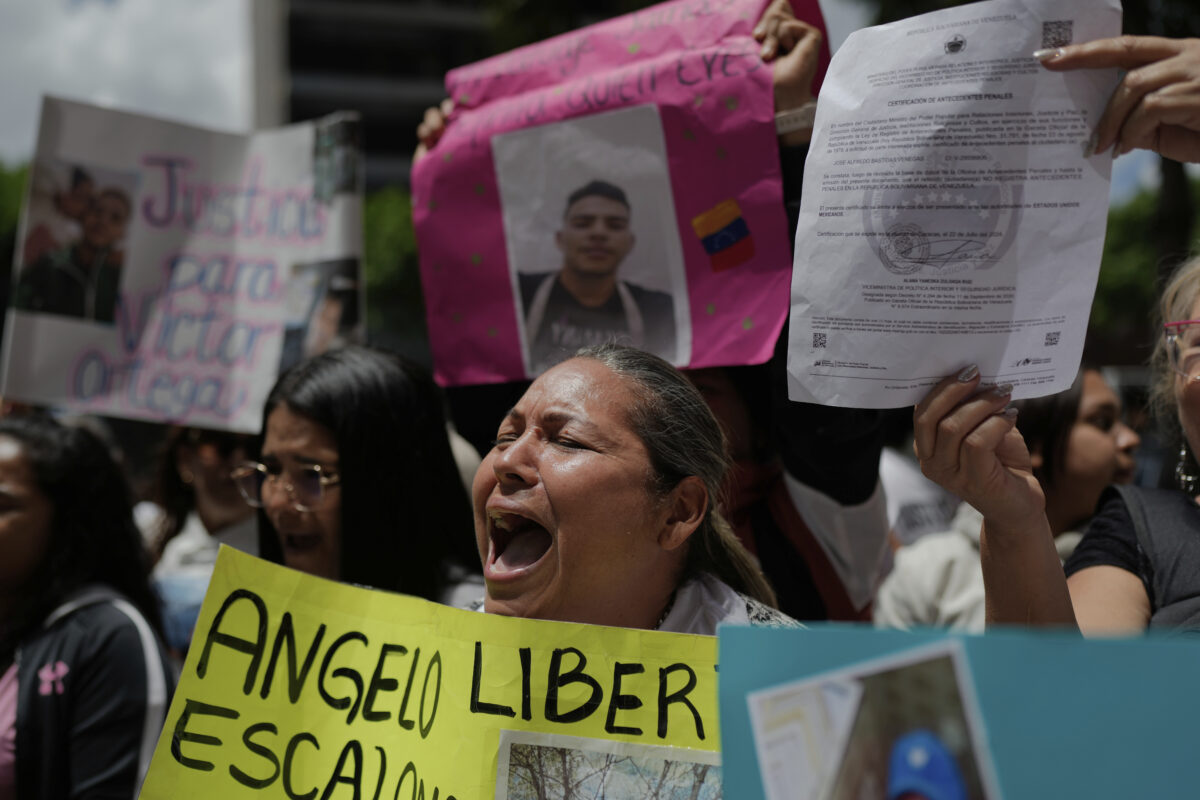
The nonprofit organization PHILADELPHIA250, presented a showcase of eleven community-lead projects on December 14th at Barnes Foundation that highlighted the common desire to design equity programs with economic and social impact for the city of Philadelphia for the next 200 years. The public call for the innovative ideas started a year ago, when a task force of more than 40 cross-sectors of the region’s leading corporate and business were assembled to develop the concept of “legacy building” in this multigenerational and intergenerational unique city.
During the inaugural introduction in the Annenberg Court, Danielle DiLeo Kim, AIA Executive Director PHILADELPHIA250, mentioned to the assistants and community leaders about the importance of leaving a blueprint for the 250th anniversary of American independence in a “new meaningful way.” This means, emphasizing on the stories that are being told “by the people” and “for the people.” DiLeo Kim said, in the “Showcase and Celebration” announcement, that the success of this program was “due to the participation of nearly one hundred people who shared their time, resources and expertise.”

Building multicultural and intergenerational legacy community-lead projects for new generations
In the course of the speech, DiLeo recognized that in the past year PHILADELPHIA250 has engaged with forty-eight task force members, two community outreach coordinators, and a full time DEI (Diversity, Equity and Inclusion) consultants; in addition to twelve community leaders —who served also as project mentors to the semifinals teams—, and engaged with more than ten subject matters experts that helped design and lead the sessions during the four months of the incubation programs.

The power of sharing transformational stories
During the informal presentation, the representatives of the eleven “Leave a Legacy” finalists’ community-lead programs selected by PHILADELPHIA250, had an opportunity to expose to the audience the vision of their projects. In the Annenberg Court, the assistants found a visual board with a brief information of Cities of Inclusion, a project of the Special Olympics Pennsylvania; Healthtribe Student Network, The Miyanda Project, Neighborhood Bike Hubs, Our Market, The Philadelphia Music Museum, Read Feather’s Legacy: We are Still Here; Revolutionary Action Figures, a project of Smith Memorial Playground and Playhouse; Second Story Collective, a part of the Writers Room at Drexel University; The West Philly Bunnyhop, and Prosper Park.
For example, in a brief exposition the representatives of the Second Story Collective project mentioned that this writing program helped the neighbors identify a “displacement problem” of that particular area in the city; in addition to the “social isolation” that seniors —who are living alone in their house— are experiencing at this moment of time. One of the solutions proposed is to create an “affordable housing” pairing a Drexel student and a senior of that neighborhood. The objective of this program is to minimize the impact in the rent cost for the Drexel student, and help —at the same time—, the senior landlord not only with a monthly margin profit, but also with the opportunity to develop an intergenerational social relationship with a younger generation. The goal is to facilitate that both generations can benefit from sharing life experiences, closing a generational gap, and learning to live in a harmonious community environment.

The legacy projects are built on the “inequity” common benchmark in our society
In the panel discussion entitled “In Conversation with PHILADELPHIA250’s Official Legacy Projects” moderated for Loraine Ballard Morril —award-winning Director of News and Community Affairs for iHeartMedia Philadelphia—, with the three representatives of the selected winners in the Comcast Auditorium —Cities of Inclusion, Our Market, and Revolutionary Action Figures—, discussed the importance of building a “legacy” in the design, process and execution of their community-lead projects.
The spokesperson from Cities of Inclusion mentioned that this project is a “champion for people with disability,” and the concept of “legacy” must challenge and confront history with the purpose of setting ambitious goals that live beyond our time; telling new stories that transform all people for a more inclusive society. The design of the project is based on understanding what the problem is and how it needs to be solved without forgetting the voices that haven’t been heard.
Danielle Smith from the Revolutionary Action Figures proposal indicated that during the development process of this program, the team talked with adults that were children during the Bicentennial celebration in Philadelphia during 1976. These adults shared their stories and the civic programs that they remembered participating during that time. Smith believes that active listening is the key in the development process of this project. For instance during the Black History Month Project “Leaders and Legends,” children that attended Smith Memorial Playground and Playhouse, didn’t know the life of the local civil rights activist Cecil B. Moore and his accomplishments. Smith mentioned that it’s important that children listen unheard stories from historical figures that impacted the community.
Finally, Michelle Angela Ortiz, visual artist, leads the “Our Market” project that started in 2019. Ortiz and a group of contributors ambitioned to engage people that work and live in the 9th street market —this area is also known as the “Italian Market,” the “Mexican Market” or “9th Street”—, with the determination of sharing “100 year old immigrant traditions that still living and breathing” in this area. The objective of this program is to build a structure on how to tell peoples’ stories and build a neighborhood tour model that can be replicated in other neighborhoods of the city.

Ortiz indicated that “everyone has a voice” and a unique perspective of the struggles that they faced in building new opportunities for their families. The artist mentioned that storytelling serves as a “tool for advocacy,” bringing “awareness to certain issues” and building a “collective community power” for a change. The idea is to provide “neighborhood tours” and a “tour guide model” in this area.
After this pilot, the tool can be replicated in other neighborhoods such as Chinatown and the business corridor on 5th in which these people can share their spaces, experiences and connections. Ortiz said that she has grown in this area and still lives in this neighborhood. The artist added that her mother and grandmother came from Colombia and worked in this market for twenty-five years; one of the reasons why her mother settled in this neighborhood is because this area resembled her “home” in her native country.
The three panelists agreed that there is a power of sharing the unique experiences of the people. Observing and listening are some of the tools to build on more inclusive and transformational solutions for the community and beyond.
For additional information about these community-lead projects visit www.philadelphia250.us.






